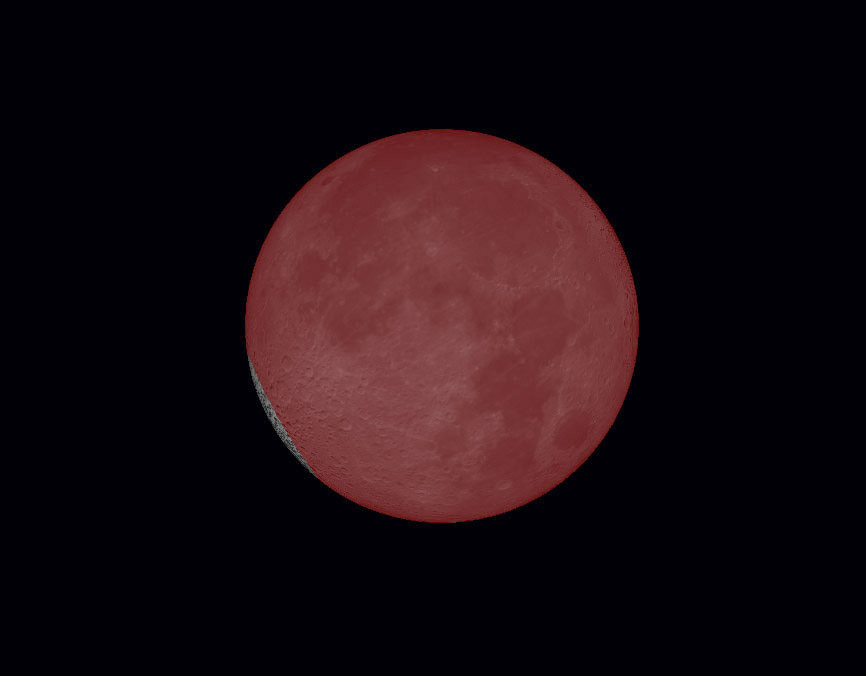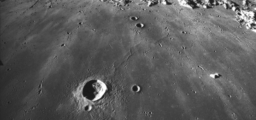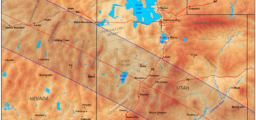Sky Report: November 15 – November 21

At 2 a.m. the moon is at maximum eclipse. Notice that the lower left edge is not fully within the umbra and is lighter than the rest. With binoculars or a small telescope you should make out the lunar maria, or “seas”.
Graphic created with SkySafariAstronomy.com.
The highlight this week is an eclipse of the moon on the morning of Friday the 19th. The good news is that we can see the entire eclipse (and that’s true from the entire USA) but the bad news is that it happens early in the morning (half of all astronomical events happen after midnight!).
An eclipse of the moon happens when the full moon passes through the shadow of the earth and grows dark. This eclipse is 97% total – at maximum 97% of the moon is in the innermost, darkest part of the earth’s shadow.
An eclipse is a sequence of events. The moon begins to enter the dark part of the earth’s shadow – the umbra – at 12:18 a.m. and from then you’ll notice the upper part of the moon begin to darken. Maximum eclipse is at 2:03 a.m.; notice that the lower left edge of the moon is brighter than the rest. The eclipse is essentially over by 3:37 a.m. If you want just a peek, set your alarm for 2 a.m. Notice that the Pleiades Star Cluster is just above the moon.
The moon’s orange color comes from light refracted through the earth’s atmosphere around the edge of the earth and onto the moon; this is the light from all the earth’s sunrises and sunsets.
If you were on the moon this would be an eclipse of the sun as the earth moves between the moon and sun. If you’re in the umbra the eclipse it total; if in the surrounding penumbra the eclipse is partial.
You may hear about the Leonid Meteor Shower which peaks on the morning of the 18th, and this is a good opportunity to evaluate news sources and see which are guilty of hype. Sensationalism surrounds us. We may be told that the Leonids is a major shower and you must go out and see it; the truth is that it can be a spectacular shower, but at 33-year intervals, last in 2001. On off years you might see at most 15 meteors per hour but this year bright moonlight will ruin it, so don’t bother.
The planets are pretty-much where they were last week. Venus is brilliant low in the southwest for the two hours after sunset. Jupiter is almost as bright and is higher and in the south. Fainter Saturn is between them and closer to Jupiter.
Under a grant from the Utah Governor’s Office of Economic Development and the Kane County Office of Tourism, Stellar Vista Observatory offers portable telescopes and tripod mounted binocular kits on loan for free to all residents of Kane County. Nothing beats a quality binocular or astronomical telescope to enhance enjoyment of the night sky! Visit https://stellarvistaobservatory.org/discover-the-night-sky/ or Kanab City Library for full details.
The Sky Report is presented as a public service by the Stellar Vista Observatory, a nonprofit organization based in Kanab, Utah, which provides opportunities for people to observe, appreciate, and comprehend our starry night sky. Additional information is at www.stellarvistaobservatory.org. Send questions and comments to John@StargazingAdventures.org.






Comments are closed.